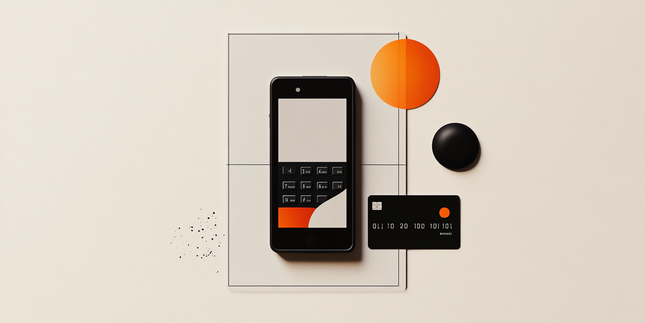In focus today
Today, we look out for January inflation data for Germany and France, which we receive ahead of euro area data on Monday. Yesterday, Spain's January inflation was reported at 2.9%. It will be interesting to see what these indicators suggest about euro area inflation and the broader trends for the region.
This afternoon, the US will release December's PCE data on private consumption and inflation. Since yesterday's flash GDP data already included the quarterly data which covers private consumption for December, today's release is unlikely to significantly impact the markets. The Fed will pay more attention to the Q4 employment cost index, which is a key measure of wage pressures.
Economic and market news
What happened overnight
In Japan, January core inflation came in at 2.5% (prior: 2.4%, cons: 2.5%), marking the fastest annual pace in nearly a year. This figure significantly exceeds the BoJ's 2% target, maintaining market expectations for further interest rate hikes.
What happened yesterday
In the euro area, ECB cut policy rate by 25bp to 2.75%, as widely anticipated. Lagarde's assessment of growth and inflation remained unchanged from December, offering no new insights into future policy rates. Looking ahead, the ECB is expected to deliver another rate cut at the March meeting. However, when asked the important question on where the cutting cycle will end, Lagarde did give any signals. See more in Flash: ECB review, 30 January.
Euro area GDP growth for Q4 registered at 0.0% q/q, below expectations of 0.1% q/q. This brings overall GDP growth for 2024 to 0.7% y/y. The Q4 figures highlight continued growth divergence within the euro area, with France and Germany contracting, while Spain and Portugal recorded very strong growth. We anticipate that growth will gradually improve in 2025, driven by rising real incomes and significantly lower policy rates. Private consumption is expected to increase and become the main growth driver. We expect 2025-euro area GDP growth to be 0.9% y/y.
Turning to individual countries, we started the day with France's Q4 GDP, which slightly declined by 0.1% q/q, following a prior increase of 0.4%. Over the last two quarters, GDP growth in France averaged 0.15% q/q, continuing to weight down euro area growth.
In Germany, Q4 GDP fell by 0.2% q/q, mainly due to exports being significantly lower than in Q3, despite increases in household and government final consumption expenditure. The German economy ended in negative territory with GDP overall falling 0.2% in 2024. While we expect quarterly growth to improve gradually throughout 2025, due to statistical underhang, German GDP growth is forecasted to remain flat at 0.0% y/y.
In Spain, higher energy prices drove up inflation rate to 2.9% in January (prior: 2.8%, cons: 2.8%).
In US, Q4 flash GDP came in at 2.3% q/q (prior: 3.1%, cons: 2.6%), marking a weaker than expected end to 2024, a year characterised by the resilience of American consumers. Overall, the economy expanded 2.8% in 2024.
In Denmark, following ECB's rate cut, Nationalbanken cut its key rate by 25bp bringing it to 2.35%.
Equities: Global equities rose yesterday, with European shares once again taking the lead. Perhaps more interestingly, the recent trend is not solely about the US and the MAG 7. Europe has been outperforming the US, and equal-weighted indices have been outperforming the cap-weighted S&P 500. A positive angle is the broadening out of leadership, with all 25 industries in the STOXX 600 advancing yesterday, and defensives performing on par with cyclicals in Europe while outperforming in the US. On a global scale, the only sector that declined yesterday was tech, and this was not a top-down story but more related to earnings in the US. In the US yesterday: Dow +0.4%, S&P 500 +0.5%, Nasdaq +0.3%, Russell 2000 +1.1%. Asian markets are mixed this morning, with South Korea standing out on the negative side. European futures are also mixed this morning, while the US is once again higher, led by the Nasdaq.
FI: European rates ended some 8bp lower in the 2y point and 6bp in the 10y point. Rates generally rallied outside the ECB meeting. Weaker than expected German, French and Italian GDP and positioning ahead of the ECB meeting on risk of a dovish Lagarde led the front-end rally. Markets are pricing another 70bp of rate cuts by year-end. Denmark's central bank mirrored the ECB's rate decision yesterday, thereby keeping the -40bp spread between the policy rates.
FX: EUR/USD was left rather unscathed by yesterday's uneventful 25bp ECB cut. News on tariffs from the Trump administration continues to be taking centre stage with Canada, Mexico and China in focus. AUD has been among the weakest performing G10 currencies this week with Australian Q4 inflation coming in below expectations and underlying inflation now close to pre-pandemic levels for the first time since 2021. European natural gas prices continue to grind higher with the tight supply situation being the main reason, but the flash PMIs last week suggested that economic growth might be on the rise as well.
This publication has been prepared by Danske Bank for information purposes only. It is not an offer or solicitation of any offer to purchase or sell any financial instrument. Whilst reasonable care has been taken to ensure that its contents are not untrue or misleading, no representation is made as to its accuracy or completeness and no liability is accepted for any loss arising from reliance on it. Danske Bank, its affiliates or staff, may perform services for, solicit business from, hold long or short positions in, or otherwise be interested in the investments (including derivatives), of any issuer mentioned herein. Danske Bank's research analysts are not permitted to invest in securities under coverage in their research sector.
This publication is not intended for private customers in the UK or any person in the US. Danske Bank A/S is regulated by the FSA for the conduct of designated investment business in the UK and is a member of the London Stock Exchange.
Copyright () Danske Bank A/S. All rights reserved. This publication is protected by copyright and may not be reproduced in whole or in part without permission.
Recommended Content
Editors’ Picks

EUR/USD holds losses below 1.0500 on Trump’s tariff uncertainty
EUR/USD keeps losses below 1.0500 in the European trading hours on Thursday. The pair suffers from a sustained US Dollar recovvery-led by US President Trump's conflicting messages on tariffs. Traders now look to the ECB Minutes, US GDP revision and Trump-speak for impetus.

GBP/USD remains depressed below 1.2700 amid US Dollar strength
GBP/USD remains depressed below 1.2700 in European trading on Thursday. Broad US Dollar strength and cautious mood, amid US President Trump's tariff uncertainty, weigh down on the pair ahead of key US macro releases and more Trump talks.

Gold falls on Trump creating more confusion about tariffs
Gold’s price faces strong selling pressure and extends this week’s correction to hit a ten-day low near $2,880 on Thursday. The leg lower comes after US President Donald Trump cast doubts and confusion during a cabinet meeting on Wednesday about what levies will be applied, when, and to which countries.

Solana Price Forecast: DTCC lists first SOL futures ETF, will it avert $130 breakdown?
Solana price tumbled from $172 to $134 this week as FTX estate’s impending token unlock looms ahead despite early gains from a new SOL ETF listing.

February inflation: Sharp drop expected in France, stability in the rest of the Eurozone
Inflation has probably eased in February, particularly in France due to the marked cut in the regulated electricity price. However, this overall movement masks divergent trends. Although disinflation is becoming more widespread, prices continue to rise rapidly in services, in France as well as elsewhere in the Eurozone.

The Best brokers to trade EUR/USD
SPONSORED Discover the top brokers for trading EUR/USD in 2025. Our list features brokers with competitive spreads, fast execution, and powerful platforms. Whether you're a beginner or an expert, find the right partner to navigate the dynamic Forex market.